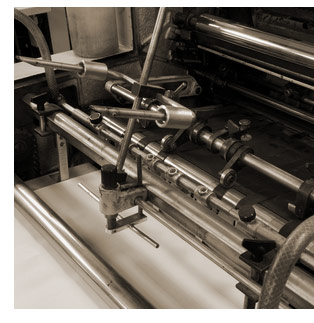
I come across a lot of self-published authors that are unsure how their book will be printed, offset or digitally. And that never occurred to them until I ask them during our first initial talk, before i start to design their book.
The following is a straight forward explanation between offset and digital printing, and why it’s important for me and the author to know.
Digital printing, is printing your book pages one page at a time, much like a home printer. It started in the 1990’s with the development of the computer, and in today’s technology it’s come a long way in the book printing industry. When comparing a digital printed book, next to an offset printed book (the traditional way of printing books), you wouldn’t be able to tell the difference to the printed text. Digital printing evolved from the demand of having only a few copies printed at a time, normally 1 to 400 copies or so.
Offset printing, prints many of your book pages at once on large sheets or reels of paper which is then folded and cut to produce 4, 8, 16, 32 or 64 smaller sheets. These smaller sheets are called a Gathering or Signatures. Folding one signature in half gives 4 pages. Folding it in half again and cutting along the fold gives two signatures — 8 pages. Folding it in half again, gives four signatures — 16 pages, and so forth...
The groups of signature pages are then binded together to form your book. Ideal for many books printed at once, 500+ copies.
I’m going to give you a simple example. Have you ever come across a book where there are a few blank pages at the end of that book? That’s because it was printed offset — Remember I told you that an offset printed book is printed with a lot of your book pages printed onto one large sheet, and then those sheets are cut into smaller sheets, folded, cut again and binded together? Well, your book’s last pages may only cover 3/4th of that large sheet of paper ... the rest of that sheet is empty ... those are the empty pages found in the back of a book.
If I know your printing offset, I can consciously design your book to minimize the amount of empty pages at the end of your book, if any at all.
Digitally printed books have no empty pages, because they are printed one page at a time.
.
